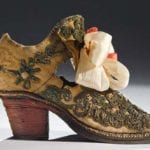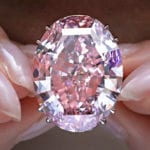 Weird Stuff
Weird Stuff  Weird Stuff
Weird Stuff  Animals
Animals 10 Inspiring Tales of Horses Being Human
 Mysteries
Mysteries Top 10 Haunting Facts About the Ghost Ship MV Alta
 History
History 10 Surprising Stories About the Texas Rangers
 Humans
Humans 10 Philosophers Who Were Driven Mad by Their Own Theories
 Miscellaneous
Miscellaneous 10 Video-Game-Worthy Weapons and Armors from History
 Weird Stuff
Weird Stuff 10 Psychics Who Accurately Predicted Wartime Events
 The Arts
The Arts 10 Pieces of Art Inspired by a Broken Heart
 Health
Health 10 Science Fiction-Sounding New Medical Treatments
 History
History 10 Surprising Facts About the Father of Submarine Warfare
 Weird Stuff
Weird Stuff 10 Times Real Laws Were Based on Bizarre Hypotheticals
 Animals
Animals 10 Inspiring Tales of Horses Being Human
 Mysteries
Mysteries Top 10 Haunting Facts About the Ghost Ship MV Alta
Who's Behind Listverse?

Jamie Frater
Head Editor
Jamie founded Listverse due to an insatiable desire to share fascinating, obscure, and bizarre facts. He has been a guest speaker on numerous national radio and television stations and is a five time published author.
More About Us History
History 10 Surprising Stories About the Texas Rangers
 Humans
Humans 10 Philosophers Who Were Driven Mad by Their Own Theories
 Miscellaneous
Miscellaneous 10 Video-Game-Worthy Weapons and Armors from History
 Weird Stuff
Weird Stuff 10 Psychics Who Accurately Predicted Wartime Events
 The Arts
The Arts 10 Pieces of Art Inspired by a Broken Heart
 Health
Health 10 Science Fiction-Sounding New Medical Treatments
 History
History 10 Surprising Facts About the Father of Submarine Warfare
Top 10 Incredible Items That Were Stolen
Is it true that a group of journalists stole the Empire State Building for just one day? How did police catch the thieves that stole one of Norway’s most famous paintings? Did anyone ever locate the Stradivarius violin of one of the most well-known concert violinists of the 20th century?
Everyone knows that famous artwork and historic artifacts are among some of the most valuable pieces, but what really goes into stealing the most expensive items on Earth? Below, you will learn about some of the world’s most expensive items and the risky operations that went into stealing them.
10 Glittering Facts About The Faberge Eggs
10 The Mona Lisa

Known as one of the most famous paintings in the world, The Mona Lisa painted by Leonardo da Vinci, was once stolen by a staff member of the Louvre where the painting is housed. Vincenzo Perugia was a maintenance man working in the Louvre and had been hired to build glass cases for some of the museum’s works of art. In August 1911, he waited in a closet until after the museum had closed for the day and stole the painting along with two other staff members.
Two years later in 1913, the Mona Lisa was returned to the Louvre after Peruglia tried to sell it to an Italian art dealer. Once found by police, Peruglia claimed that he wanted to return the painting to its native Italy and was sentenced to seven months in jail. The Mona Lisa ranks as one of the most expensive items ever stolen and is estimated to be worth approximately $2 billion.
9 The Empire State Building

Back in 2008, Daily News pulled off one of the largest heists ever recorded in history. In order to prove to the city that their record keeping system needed to be updated, Daily News briefly stole the $1.89 billion property on which the Empire State Building sits.
The journalists drafted up fake documents, placed a fake notary stamp on them, and submitted the paperwork to the city. The city officially stamped the documents that same day which then allowed the deed to the property to be turned over to Daily News. This process revealed an enormous loophole in the city’s system which did not require city clerks to verify information on these documents. Fortunately, Daily News rightfully returned the property to the city within 24 hours of the scam and the laws were changed.
8 The Concert
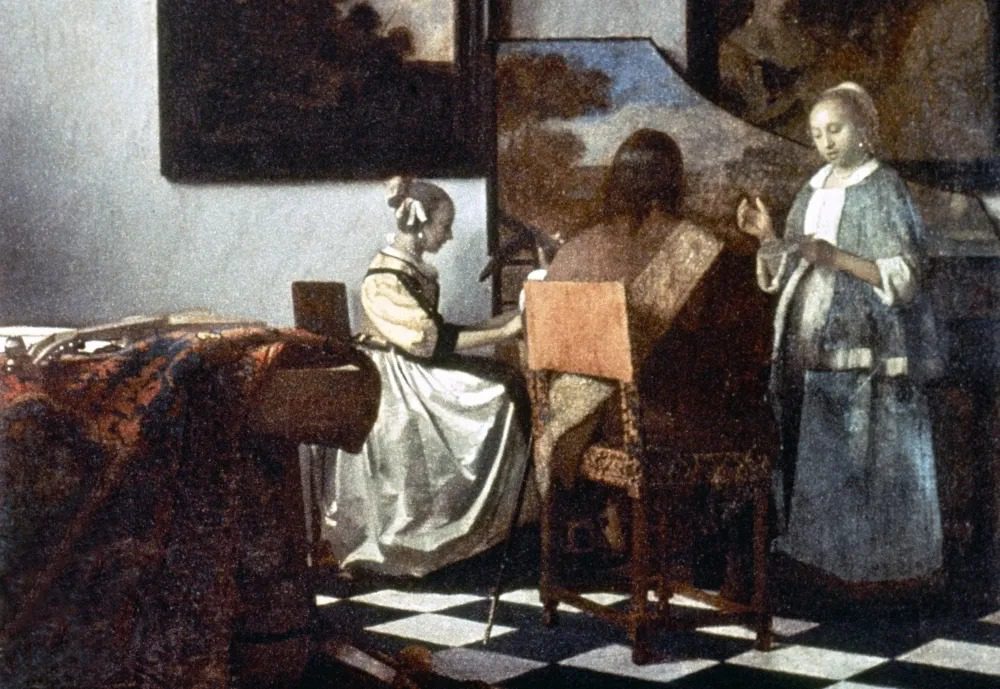
“The Concert” was a painting done by famous artist, Johannes Vermeer between the years 1663 and 1666 and was placed in the Isabella Stewart Gardner Museum in Boston, MA. The painting pictures two women and a man in a parlor, focusing on music.
In the early morning hours following Boston’s St. Patrick’s Day celebrations in 1990, two thieves disguised as policemen requested to enter the museum to investigate a disturbance. The guards allowed the fake policemen to enter and once inside, the thieves handcuffed and tied up the guards in the basement. Over the course of 81 minutes, the thieves stole 13 pieces of art and left the guards handcuffed in the basement. Of the 13 pieces stolen, “The Concert” was the most valuable and is worth an estimated $200 million. The whereabouts of the art is still unknown and remains one of the greatest mysteries in the art world today.
7 The Amber Room
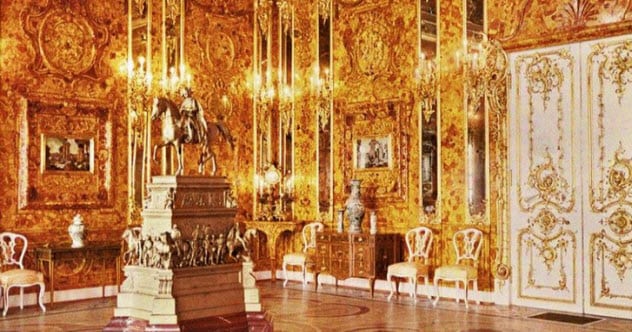
Known by some as the ‘Eighth Wonder of the Word’, The Amber Room was a creation by Andreas Schluter starting in 1701 and was completed in 1770 after many other architects and craftsmen had also worked on the room. The room was originally housed in the palace of King Frederick I and Queen Sophie Charlotte, but was moved to two other locations, Berlin City Palace in 1716 and the Catherine Palace in 1755. Upon its completion, the room spanned over 590 square feet and contained more than 6 tons of amber panels. Today, the room is estimated to be worth approximately $140 to $280 million.
The Amber Room remained in Russia until the Nazis raided St. Petersburg in 1941, when they dismantled the room and shipped the pieces to Königsberg castle in Germany on Hitler’s orders. After the room was erected, it stayed in the castle for two years until the war shifted in favor of the Allied forces and Hitler then ordered the room to be packed and shipped. The castle was heavily bombed by Russian Allied Forces in 1944 and a mystery remains as to whether the room was stowed in the castle and destroyed during the bombing or if it had already been removed.
6 The Scream

In 1994, one of Norway’s most prized paintings was stolen from a museum in Oslo. “The Scream”, painted by Edvard Munch, is worth about $120 million and is the most famous of the four versions of the painting. Munch finished the painting in 1893 and it was eventually placed in the National Gallery in Oslo.
The painting was stolen in under one minute on the opening day of the 1994 Winter Olympics in Lillehammer. The thieves used a ladder to reach a window on an upper floor, broke through the window, and cut down the painting. Days after the robbery, the Norwegian government had been demanded $1 million in ransom, but did not end up paying the money as they were unsure whether the demand was legitimate. Three months after the artwork was stolen, it was found fully in tact in a hotel about 40 miles outside of Oslo, but authorities still had no leads on the identities of the thieves.
A couple of years later, police had found pieces of the artwork’s frame in a small town north of Oslo and a note from the thieves. It wasn’t until January 1996 that four men were arrested and sentenced in relation to the robbery.
5 The Saliera
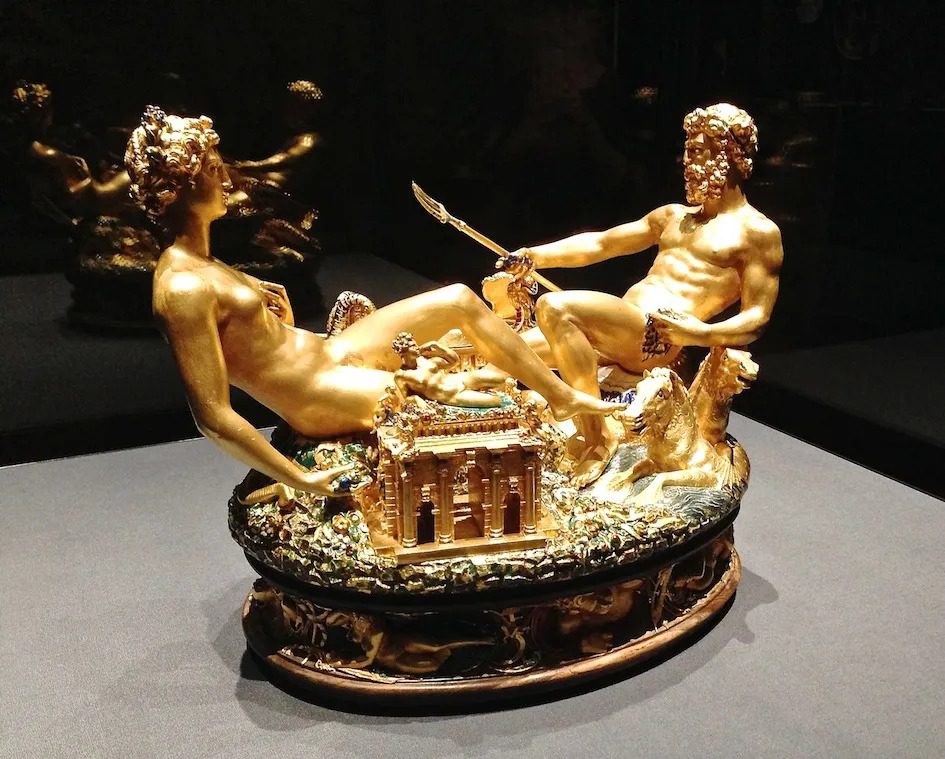
The Saliera is a gold sculpture created by artist Benvenuto Cellini between 1540 to 1543 for Francis I of France. The sculpture was eventually passed to Charles IX, then Archduke Ferdinand II. The Saliera functions as a salt cellar and depicts Ceres, the goddess of agriculture and Neptune, the god of the sea. This gold-plated work of art is worth an estimated $60 million and was placed in Vienna’s Art History Museum.
In 2003, a security-alarm specialist named Robert Mang, became interested in the item and climbed up the building, broke a window, and hijacked the sculpture. Mang then placed it inside a box and buried it in the woods outside of Vienna. After burying the box, he sent a trident from the sculpture as a clue that he had information on its whereabouts and demanded a ransom. Upon learning that security camera evidence of him had reached the public, Mang confessed to the crime and was sent to prison. The Saliera was put back on display in a Vienna museum in 2006.
4 The Stradivarius Violin
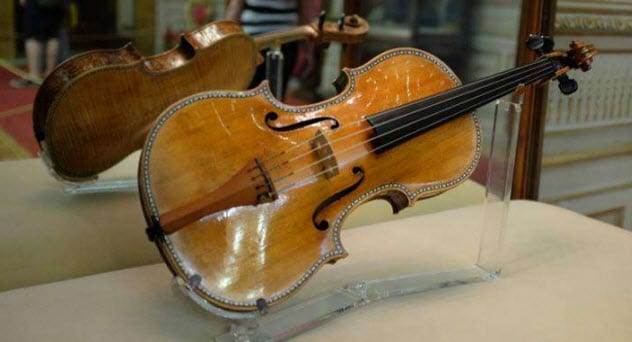
In 1995, well-known concert violinist Erica Morini, had a $3.5 million violin stolen from her apartment in New York City. The Stradivarius violin was made in 1727 by Antonio Stradivari and was bought by Morini’s father in Paris for $10,000 in the early 1900s.
Morini’s life-long friend, Erica Bradford, discovered that the violin was missing upon a visit to the Fifth Avenue apartment. Bradford had gone to the apartment to prepare for Morini’s upcoming stay at Mount Sanai Hospital and upon checking the violin, she noticed that it had been replaced with an empty case in the locked cabinet. Morini was at the age of 91 when the violin was stolen and she died shortly after the incident, though was never informed of the robbery. The violin has never been found and still remains on the FBI’s list for top 10 art crimes.
3 Dorothy’s Ruby Red Slippers
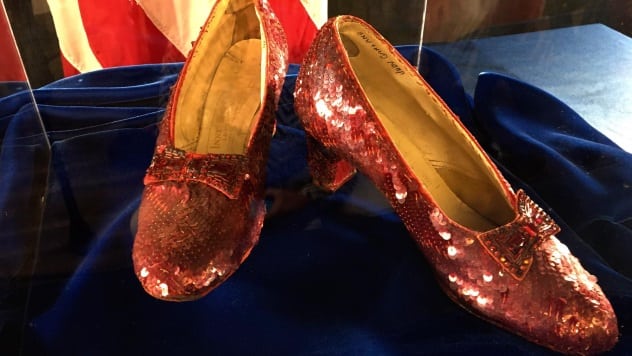
On August 28, 2005, the ruby-red sequined slippers worn by Dorothy in “Wizard of Oz” were stolen from the Judy Garland Museum in Grand Rapids, Minnesota. The slippers, said to be worth between $2 to $3 million, were stolen from a case in the museum after the thief smashed the glass. Police were left with very few clues as there were no fingerprints or video camera footage left behind. After a private donor offered a $1 million reward, several people had come forward claiming to have information about the thief, but all of these tips led to a dead end.
Thirteen years later in 2018, someone had called the insurance company that now owns the slippers and stated that they had information to help the investigation. After a short time, it was evident that the person had been planning to make money off of the insurance company. The FBI recovered the slippers in Minneapolis and the person was not given any of the reward money.
2 The Fabergé Easter Eggs
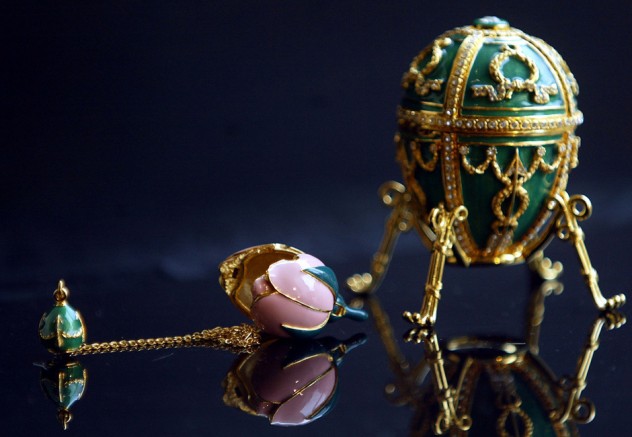
The story of the Fabergé eggs started with Czar Alexander III in 1885 when he wanted to gift his wife, Maria Feodorovna, something special for Easter. He sought the help of Peter Carl Fabergé, who was an expert goldsmith at a nearby jewelry store. Fabergé then created a white egg with a golden yolk inside. A golden hen on gold straw sat inside the yolk, while inside the hen was a diamond crown and a ruby pendant. This became known as the Hen Egg and was the first of 50 unique and individualized Fabergé eggs that were created each year by Alexander III and his son, Nicholas II.
Nicholas II continued having eggs delivered until 1917, when the Bolshevik Revolution led him to leave the throne. His family was killed by the Bolsheviks in 1918 and the eggs were packed and stored at the Kremlin in Moscow. After 10-20 years had passed and the Russian economy declined, the eggs were sold to international buyers.
Since being sold, the eggs now sit in different museums and displays around the world, though the whereabouts of seven of the eggs still remain unknown. Each egg is said to be worth $1 million and remains as one of the most valuable items ever stolen.
1 3,000 lb. Copper Bell
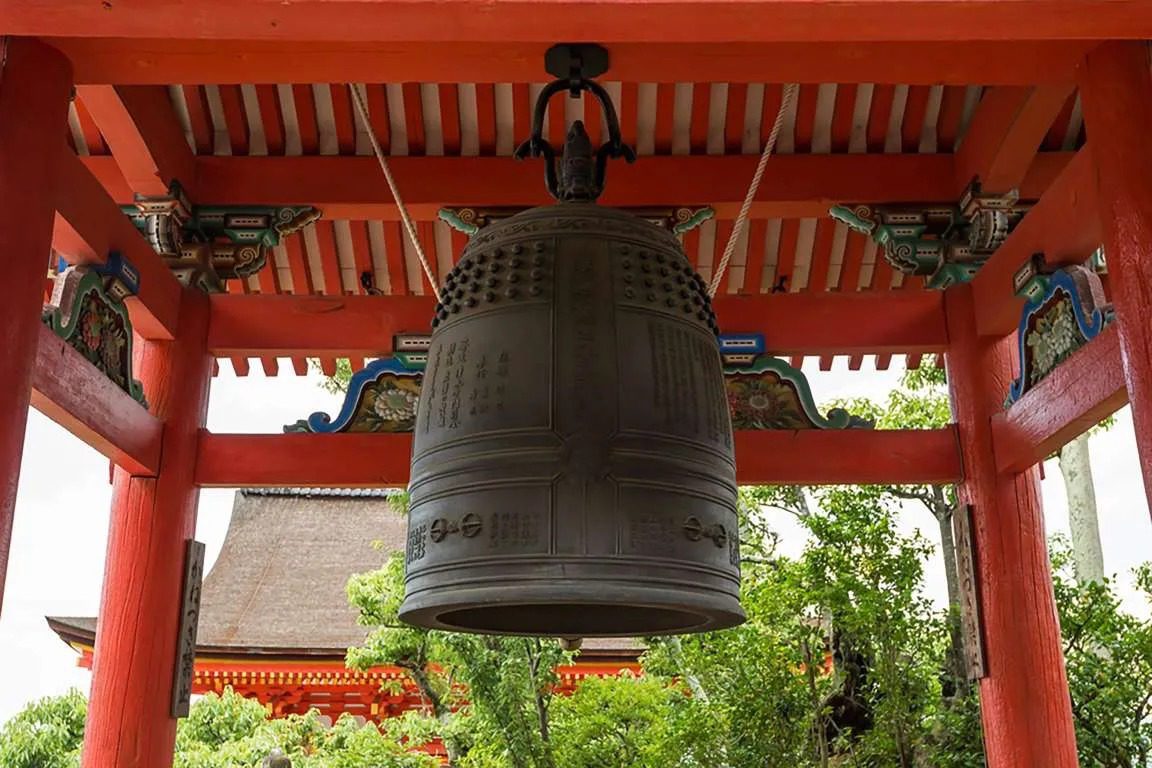
In 2005, a 12-foot-tall, 3,000-pound, copper bell and its frame was stolen from a Buddhist monastery in Tacoma, Washington. The bell was stolen while the monks were meditating. Police believed the robbers used machinery to commit the crime due to the enormous weight and size of the bell.
The bell was returned to the temple a few years later by a man who had come across the bell after buying a storage unit at an auction. After purchasing the unit, the man was contacted by David L. Hunter, who claimed that he was the rightful owner of the unit and all of its contents. Hunter offered the man $500 for the items in the unit, but the man declined the offer, returned the bell, and informed local Fish and Wildlife Officers about the conversation. Authorities arrested Hunter in 2008, almost 3 years after the bell was stolen.
